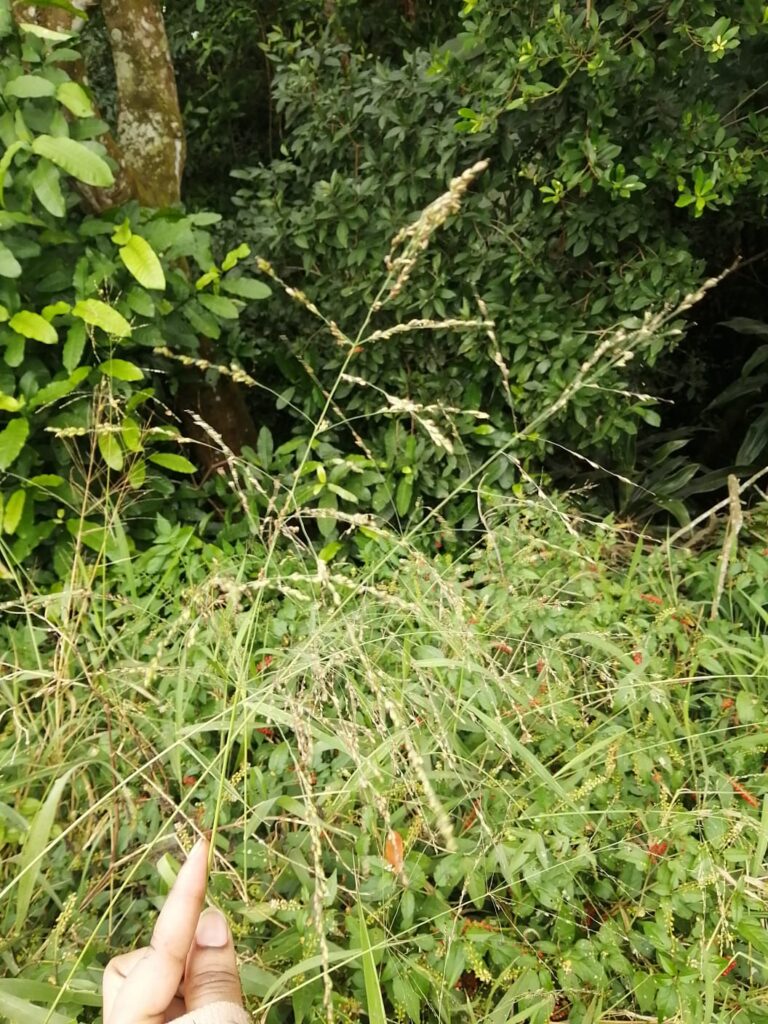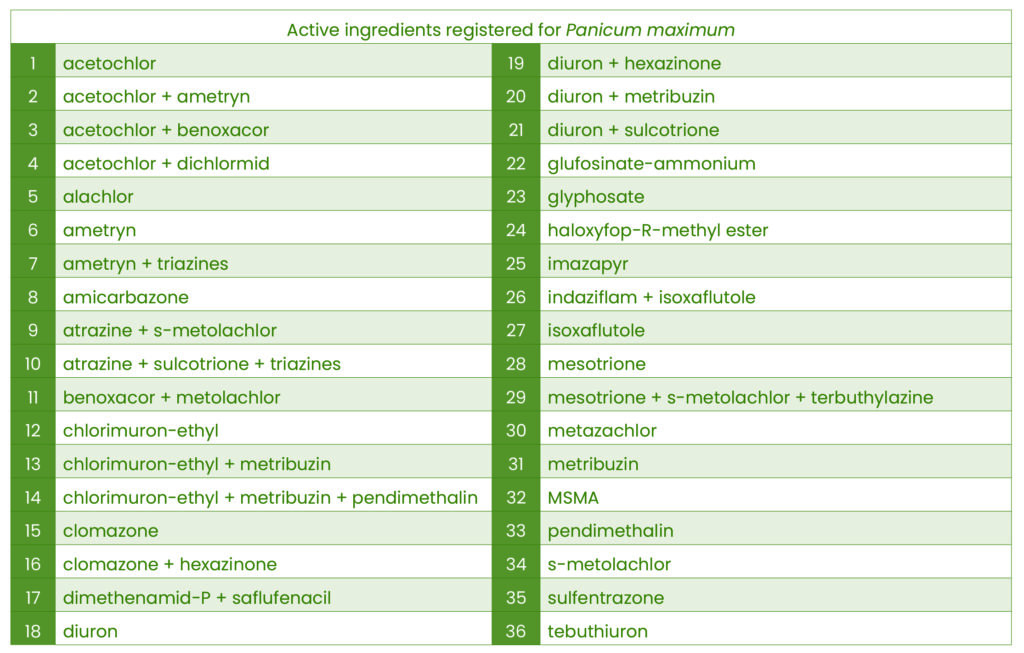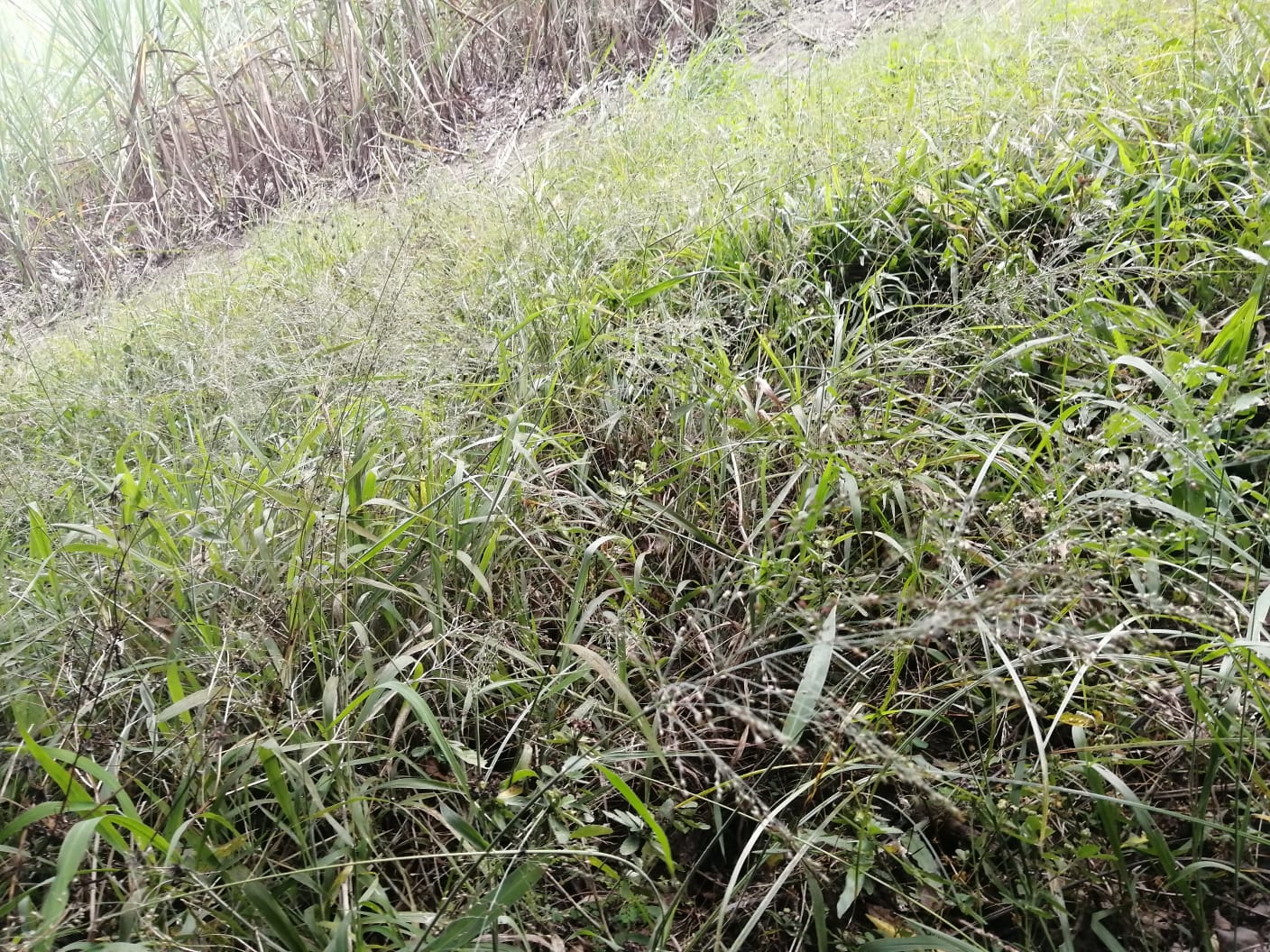In the South Coast and Midlands South regions of KwaZulu-Natal, a significant weed challenge has emerged in the form of giant Panicum maximum, also known as Guinea grass, Barbi grass, or uBabe. This invasive species poses a substantial threat to sugarcane agriculture, thriving in disturbed environments such as roadsides and neglected areas.
Characterised by its perennial tufted growth pattern and robust root system, the giant Panicum maximum shares the same genus and species with the common P. maximum, yet they are phenotypically larger in size.
The stems of this robust grass can reach a height of up to 3.5 m with stems of 5 mm to 10 mm diameter. As the stems bend and nodes touch the ground, roots and new plants are formed. The leaf blades are up to 35mm and remains green till late in winter and flowers from September to March, producing large seed heads which are green to purple and are widely dispersed by wind, birds, and farm machinery.

Management strategies to control the weed
An effective and sustainable integrated weed management strategy should be applied, which combines herbicides and farm hygiene to minimise weed seed proliferation and spread.
- Reduce seed bank in the soil.
Management of this weed is difficult. It is recommended that young giant Panicum maximum should be removed before it matures, thus preventing seed development and the dispersal of the seed.
Mature plants should be excavated, this is an intense and lengthy process.
- Minimise soil seed reserves.
Weed seedling cycles can be broken by implementing a fallow period on fields with high giant Panicum maximum.
- Good Farm hygiene.
Farm machinery and vehicles should be cleaned between fields to prevent the transportation of seeds from one area to another.
- Herbicide application.
There are no herbicide products specifically registered for giant Panicum maximum, however the following active ingredients are registered for the control of common Panicum maximum:

Always use registered combination of herbicides and follow label recommendations.
Herbicides should be applied timeously.
Herbicides with different modes of actions should be rotated to reduce developing herbicide resistance.

